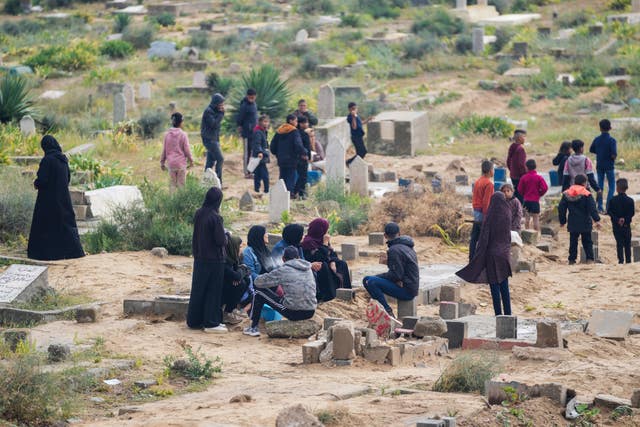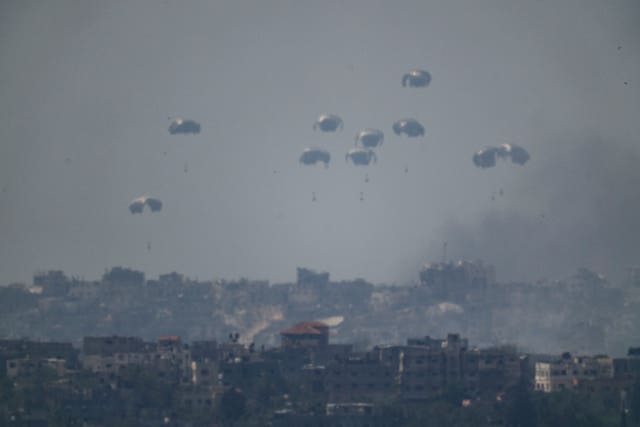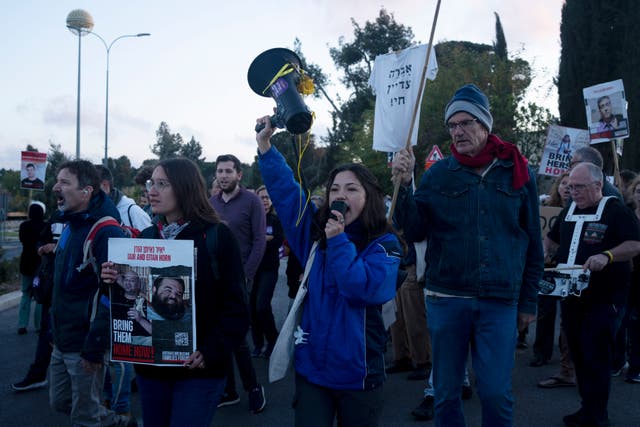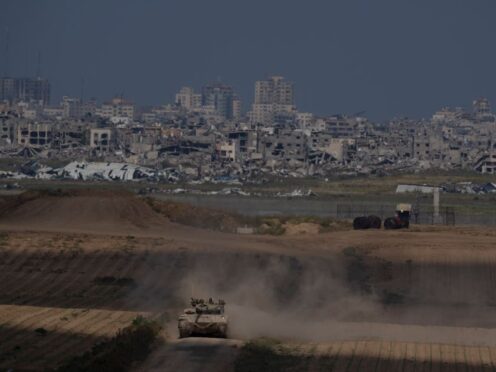Israeli aircraft have killed three sons of Hamas’s top political leader in the Gaza Strip, striking high-stakes targets at a time when Israel is holding delicate ceasefire negotiations with the militant group.
Hamas said four of the leader’s grandchildren were also killed.
Ismail Haniyeh’s sons are among the highest-profile figures to be killed in the war so far.
Israel said they were Hamas operatives, and Haniyeh accused Israel of acting in “the spirit of revenge and murder”.
The deaths threaten to strain the internationally mediated ceasefire talks, which appeared to gain steam in recent days even as the sides remain far apart on key issues.
The killings also come as Israel is under intensifying pressure – increasingly from its top ally, the US – to change tack in the war, especially when it comes to humanitarian aid for desperate people in Gaza.
Haniyeh said Hamas would not cave to the pressure levelled by the strike on his family.
“The enemy believes that by targeting the families of the leaders, it will push them to give up the demands of our people,” Haniyeh told the Al Jazeera satellite channel.
“Anyone who believes that targeting my sons will push Hamas to change its position is delusional.”
Hamas’s Al-Aqsa TV station aired footage of Haniyeh receiving the news of the deaths through the phone of an aide while visiting wounded Palestinians who have been transported to a hospital in Qatar, where he lives in exile.
Haniyeh nodded, looked down at the ground and slowly walked out of the room.
Hamas said Hazem, Amir and Mohammed Haniyeh were killed in the Shati refugee camp in Gaza City, where Ismail Haniyeh is originally from.
Hamas said three of Haniyeh’s granddaughters and a grandson were also killed.
Hamas did not disclose their ages.
The brothers were travelling with family members in a single vehicle targeted by an Israeli drone, Al-Aqsa TV said.
The Israeli military said Mohammed and Hazem were Hamas military operatives and that Amir was a cell commander.
It said they had conducted militant activity in the central Gaza Strip, without elaborating.
It did not comment about the grandchildren killed.
The strike on Haniyeh’s family is the latest bloodshed in a war with no end in sight.

Earlier, Israeli War Cabinet minister Benny Gantz claimed Hamas has been defeated militarily, although he also said Israel will fight it for years to come.
“From a military point of view, Hamas is defeated. Its fighters are eliminated or in hiding” and its capabilities “crippled”, Mr Gantz said in a statement to the media in the southern Israeli city of Sderot.
But he added: “Fighting against Hamas will take time. Boys who are now in middle school will still fight in the Gaza Strip.”
Mr Gantz reiterated the Israeli government’s commitment to go into Rafah, the city at the far southern tip of the Gaza Strip where more than half the territory’s 2.3 million people are now sheltering.
For Palestinians, the strike on Haniyeh’s family darkened an already grim Eid al-Fitr holiday, which ends the holy fasting month of Ramadan.
Palestinians marked the holiday by visiting the graves of loved ones killed in the war.
In the Jabaliya refugee camp near Gaza City, people sat quietly by graves surrounded by buildings destroyed by Israel’s offensive, which was launched in response to the deadly Hamas attack on October 7.
As misery in Gaza lingers, Israel has faced increasing pressure, including from its own top ally, the US, to change tack in the war, especially in regards to the delivery of humanitarian aid.
On Tuesday, US President Joe Biden called Prime Minister Benjamin Netanyahu’s handling of the war in Gaza a mistake and urged his government to flood the beleaguered territory with aid.
He repeated that call again on Wednesday, saying the efforts to boost aid were “not enough” and demanding another entry point for trucks in northern Gaza.
Mr Gantz said Israel would soon open a new crossing to serve hard-hit northern Gaza, an early target of Israel’s in the war.
After months of supporting the war against Hamas, the White House has ramped up pressure on Israel to reach a ceasefire and taken a sterner line that has rattled the countries’ decades-old alliance and deepened Israel’s international isolation over the war.
The most serious disagreement has been over Israel’s plans for an offensive in Rafah.
The rift was worsened by an Israeli air strike last week on an aid convoy that killed seven workers with the World Central Kitchen charity, most of them foreigners.
Israel said the deaths were unintentional, but Mr Biden was outraged.
Mr Biden’s latest comments highlight the differences between Israel and the US over humanitarian aid to people in Gaza, where the war has led to warnings of imminent famine for more than a million people.

“What he’s doing is a mistake. I don’t agree with his approach,” Mr Biden told Spanish-language broadcaster Univision when asked if Mr Netanyahu was prioritising his political survival over Israel’s interest.
Israel halted aid deliveries to Gaza in the early days of the war, but under US pressure has slowly increased the number of trucks allowed to enter the territory.
Still, aid groups say supplies are not reaching desperate people quickly enough, blaming Israeli restrictions and noting that thousands of trucks are waiting to enter Gaza.
Countries have attempted less efficient ways to deliver aid, including airdrops and by sea.
Israel says it has opened up more entry points for trucks to enter, especially for northern Gaza.
Israel also accuses aid groups of being too slow to deliver aid once it is inside Gaza.
Aid groups say logistical issues and the precarious security situation – underscored by the strike on the aid workers – complicate deliveries.
Mr Netanyahu has vowed to achieve “total victory”, pledging to destroy Hamas’s military and governing capabilities to prevent a repeat of the October 7 attacks and to return hostages captured by Hamas and others that day.

He says that victory must include an offensive in Rafah.
Israel launched the war in response to Hamas’s cross-border assault in which militants killed 1,200 people, mostly civilians, and took roughly 250 people hostage, according to Israeli authorities.
More than 33,400 Palestinians have been killed in the relentless fighting, according to Gaza’s Health Ministry, which does not differentiate between civilians and combatants in its count but says most of the dead are women and children.
Israel says it has killed some 12,000 militants, without providing evidence.
The war has ignited a humanitarian catastrophe.
Most of the territory’s population has been displaced and with vast swathes of Gaza’s urban landscape levelled in the fighting, many areas are uninhabitable.
